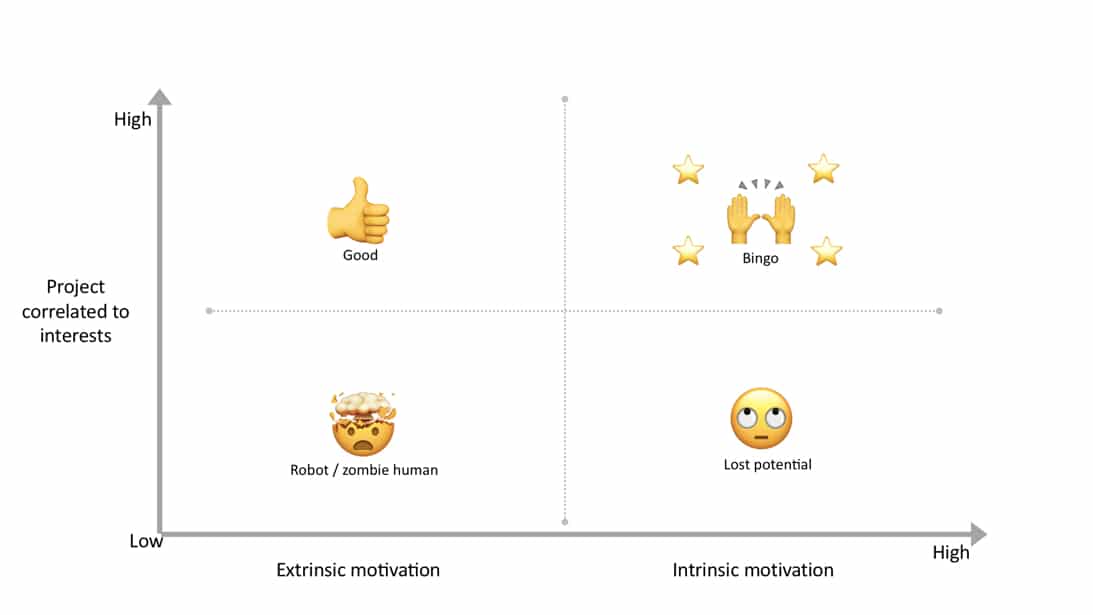Last month I wrote about knowledge management basics, introducing some thoughts on the paradoxical definition, perspectives from experts, challenges that arise, and some interesting ways to encourage knowledge sharing. You can read the full article here.
More specifically, I discussed knowledge management using three pillars:
- Input (knowledge)
- Process (management)
- Output (communication).
In this article, I’d like to explore the foundation of those three pillars, a resource so fundamental that companies are incapable of achieving anything in its absence: people.
We tend to overlook the fact that the successful companies we hear about in the news are just a conglomerate of the right people working together in pursuit of a common goal. And although there is research dating back to the 1980’s telling us that the difference between successful and unsuccessful people (who make up those successful companies) is superior intelligence or natural talent, I beg to differ. In my experience, success has much more to do with persistence and superior management.
Psych 101
To be persistent, one must be motivated. Psychology tells us that there are two key types of motivation: intrinsic and extrinsic.
Intrinsic motivation is doing something because you genuinely enjoy it. For example, going on a run because you enjoy the feeling or spending time learning about an industry because it excites you.
Extrinsic motivation is doing something not because you necessarily love it but because you like the rewards – image, money, prestige – or because you’d like to avoid punishment – ridicule, fines, or a bad reputation.
Assuming your basic needs are being met, intrinsic motivation tends to be a much more powerful source of fuel than extrinsic motivation and yields stronger results in longitudinal studies (Barrick, 2006).Therefore, it is valuable to align people to projects that they know, enjoy working on, or are genuinely excited to learn about. Furthermore, when people are enthusiastic about something they are much more likely to persist when barriers or setbacks come their way (as they always do). Also, if their knowledge about a specific subject is high, their contributions to the project will be both valuable and sustainable.
So, what if people find themselves on a project that doesn’t interest them? Well, don’t give up just yet! Studies show that people are generally happy to chase after extrinsic rewards (Paddy Miller, 2013) if those rewards make sense to them rationally (that is, the rewards are likely to help them achieve their personal goals).
Here’s a visual representation
Knowledge Sharing
So how does this help us understand people in the knowledge sharing process? Well, when a person is intrinsically motivated to work on an interesting project, they are typically considered (or eventually become) a knowledge expert. Whether they actively share their knowledge is the key issue.
Knowledge experts who are motivated to actively share their knowledge are every manager’s dream come true. However, I have yet to hear about a company that has an abundance of these kinds of people working for it. Usually, most people fall into the lower left quadrant of the 2×2 matrix illustrated above.
One solution would be to actively recruit only people from the top–right quadrant. However, these people are hard to identify ahead of time and, even if they can be identified, they are highly sought after and so will be expensive to recruit and retain.
If only we could find a less expensive and more reliable long term strategy for motivating people who already work for an organization. Does such a strategy exist? It does! And that’s exactly where superior management comes into the equation.
How can managers motivate people already working for an organization to increase knowledge sharing?
Stay tuned for the next installment!
Aneta Kosinska is a Polish-Canadian and soon to be dual master degree Ivey MSc + CEMS MIM alumni. Having worked on consulting projects in North America, Asia and Europe she has developed an international mindset with an edge in technology and culture management.
Image: Pexels


